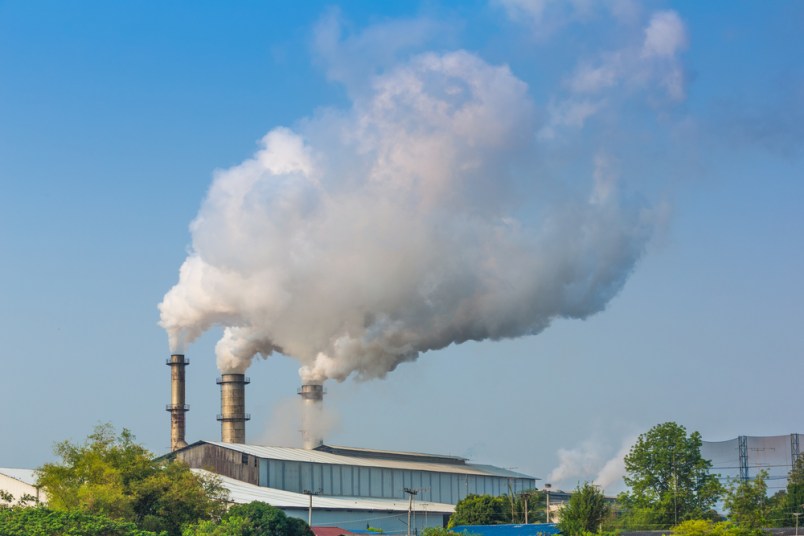What people cannot see can be very harmful. In 2012, a report on the Global Burden of Disease found that pollution from dangerous tiny particles and droplets in the air – what scientists call “fine particulate matter” – is among the leading causes of death and severe disability. According to estimates in this report, over 3.2 million deaths per year may be attributable to people breathing dangerous particles in their general environment.
The good news is that over many decades, America has figured out how to reduce emissions of fine particulate matter from smoke stacks and tail pipes, phasing in increasingly effective pollution-reducing technologies.
The bad news is that there is another kind of air pollution from even tinier particles – “ultrafine particles” – that are concentrated next to freeways and other places with a lot of motor vehicle traffic. Pockets of this kind of invisible, odorless and often overlooked pollution may be especially dangerous for people who live and work next to busy highways. Researchers are only just beginning to quantify the dangers and find ways to protect people’s health.
Many people suppose that respiratory diseases are the main risk from breathing in polluted air, but in fact the major health risks are from cardiovascular diseases. Breathing in particles from vehicle emissions, power plants, or burning fuels causes inflammation that spreads throughout the body in the blood, contributing to hardening of the arteries and increased risks for heart attacks and strokes.
Scientists have learned much about the health impacts of fine particles. This kind of pollution results in approximately 2 million deaths a year in China and India. Even in the United States, where pollution levels have been regulated for decades and skies are usually clearer than they were decades ago, somewhere between 100,000 and 200,000 deaths per year are still attributable to dangerous fine particles.
Measurements of the health effects of ultrafine particles are less well developed. While fine particle air pollution tends to be spread evenly over whole cities, ultrafine particle pollution can be high in small, local areas, next to a highway or major roadway, for example. Ultrafine concentrations can move around and go up and down rapidly. Fast-changing ultrafine pollution levels make it hard to pin down exactly how much people are exposed to.
In animal studies, ultrafine particles in the air turn out to be more toxic than similar concentrations of fine particles. Investigations looking at people have found that when ultrafine particle pollution levels go up and down, measures of health problems also rise and fall in the weeks that follow. People who live very close to heavy traffic and get exposed to high levels of ultrafine particle pollution also have more health problems, including heart and vascular problems. Air monitoring has repeatedly shown ultrafine particles are elevated next to highways and major roadways, but researchers are still working to fully connect the dots between ultrafine exposure and its health effects in people.
How can we protect people? My research group is actively looking for workable solutions – such as installing various forms of air filtration as a possible way to protect people who live or work next to highways or heavy traffic. Early experiments on public housing units near highways have not achieved the reductions we hoped for, but we are continuing to test ideas. New laws and local ordinances might also be protective. So far, only California has ordinances that restrict the building of schools next to freeways, and many places might need such rules for parks, public plazas, and other community institutions as well.
The bottom line is that particulate matter in the air – including very tiny and invisible particles in air near highways – is the most important and dangerous environmental health threat. Yet the too few recognize the dangers, and more research is needed to educate the public and help communities prepare to take action.
Doug Brugge is a professor of public health and community medicine at the Tufts University School of Medicine. He’s a member of the Scholars Strategy Network.
—
“Stock Photo: The White Smoking Chimneys Of A Factory Against A Blue Sky.” on Shutterstock






